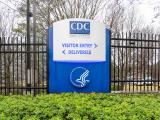Feb 14, 2011 (CIDRAP News) – The Obama administration's proposed budget for fiscal year 2012, released today, would reduce funds for public health and hospital emergency preparedness while giving the Food and Drug Administration (FDA) a boost for food safety.
A Centers for Disease Control and Prevention (CDC) budget summary says the administration plans to reduce funding for the Public Health Emergency Preparedness Program by $71.6 million from the fiscal year 2010 level. The proposed 2012 total is $643 million, said Richard Hamburg, deputy director of Trust for America's Health (TFAH), a nonprofit advocacy group in Washington, DC.
The program provides emergency preparedness grants to states and territories.
In addition, the budget proposal cuts the government's Hospital Preparedness Program by $46 million, to $380 million, Hamburg told CIDRAP News. And the CDC budget summary says the administration proposes to eliminate the Academic Centers for Public Health Preparedness and Advanced Practice Centers, saving $35.2 million.
Meanwhile, the FDA said its own budget request totals $4.3 billion, a 33% increase over the 2010 budget. That includes a $324 million increase for food safety and nutrition.
"With this increase, FDA will begin to implement the landmark Food Safety Modernization Act and also empower Americans to make healthier food choices," the agency said in a press release. "FDA will establish a prevention-focused food safety system and leverage the valuable work of FDA's state and local food safety partners. The result will be a stronger, more reliable food safety system to protect American consumers."
The food safety act was signed into law in January and is expected to cost about $1.4 billion over 5 years.
The FDA also said its budget proposal includes a $70 million increase in funds to enhance its review of new medical countermeasures against emerging diseases and chemical, biological, radiological, and nuclear threats.
The CDC and FDA funds are part of an overall $3.7 trillion budget plan that "cuts funding for half of all government agencies, eliminates or merges dozens of programs and recommends the sale of 14,000 federal buildings," Government Executive reported today. The cuts add up to $33 billion in FY 2012, the story said.
The CDC budget summary shows a proposed total of $11.26 billion for the agency in FY 2012. That amounts to a 3.4% increase from the $10.88 billion spent in FY 2010 but a 1.2% decrease from the estimated total of $11.39 billion for this fiscal year, which ends in September.
TFAH officials said the president's budget offers an overall increase in disease-prevention funds, thanks to new money from the Prevention Fund, part of the Affordable Care Act (ACA), the 2019 healthcare reform law. But TFAH criticized the cuts in emergency preparedness funds.
"The Prevention Fund is an historic new investment to improve the health of Americans and its value should not be under-recognized," said Jeff Levi, PhD, TFAH executive director. "But this investment is coming at the same time as significant cuts are being proposed to core disease prevention programs and significant cuts to programs that protect Americans from major disease outbreaks and bioterrorism events. We can't afford a budget that gives with one hand what it takes away with another."
The CDC budget summary says states and localities have made great progress in public health preparedness since 2001 with federal help, adding, "As localities take on a great role in preparedness, less support from the federal government should be required." However, Hamburg of TFAH observed that most states have been cutting public health funding amid budget deficits.
The budget documents show that the CDC would get $752 million from the Prevention and Public Health Fund under the ACA, including $134 million to "build essential public health detection and response." That includes $40.2 million for public health infrastructure, $25 million for public health work force initiatives, $40 million for epidemiology and lab capacity activities, and $20 million for preventing healthcare-associated infections.
The budget also calls for a $59.3 million increase for the Strategic National Stockpile of medical countermeasures and supplies. The money will be used to replace expiring countermeasures in high-priority public health preparedness categories and to pay for storage and management of products in the stockpile.
In other areas, the CDC document shows a 2012 budget of $4.03 billion for the Vaccines for Children program, an increase of $270 million from 2010 and an increase of $125 million over estimated 2011 spending. However, it projects that spending on immunization and respiratory disease programs will be the same in 2012 as it was in 2010—about $721 million.
At a news conference today at the Department of Health and Human Services (HHS) headquarters in Washington, DC, Secretary Kathleen Sebelius said the budget is designed to support new programs to stamp out waste, fraud, and abuse in programs and make every federal health dollar count. "We've gone through the department program by program to make resources go further," she said. Sebelius was joined by several members of HHS senior leadership, including CDC director Thomas Frieden, MD, and FDA Commissioner Margaret Hamburg, MD.
Overall funding for HHS is slightly below 2010 levels, she said. "This budget represents tough choices and targeted investments," Sebelius, said in the event streamed live on the HHS Web site.
Sebelius said the budget puts the FDA in a complex position, given that new food safety reforms have increased the agency's authority and responsibilities. She said the final version of the bill didn't include the level of user fees needed to fully implement the new law. "I don't think anyone thinks that's a sufficient amount of user fees to fully allow the law's implementation," she said.
Hamburg added that though resources are limited, she hopes people who supported the original bill will continue to work with Congress to fully fund the FDA's new food safety mandate. "2012 funding is a down payment on our ability to fully implement the law, but it's going to be an ongoing process," she said.
Frieden said the CDC's overall budge is about level. He added the provisions of the proposed budget are complex, because funding includes some new programs, such as one to decrease hospital-acquired infections, and cuts to other programs, such as community prevention block grants. It also involves reorganization of some existing programs.
He said the Obama administration's budget includes a significant decrease in public health preparedness, particularly preparedness money to states and internal resources at the CDC. However, Frieden added that federal money to rebuild the nation's Strategic National Stockpile of countermeasures is designed to improve preparedness.
Addressing a proposed budget cut of $100 million in the CDC's administrative costs, Frieden said the CDC would reduce its use of contractors and use existing employees as a way to make some of its programs more cost effective. He said the agency also plans to make more use of teleconferencing and videoconferencing as a way to rein in travel budgets. "These cuts aren't painless, but they're preferable to program cuts," he said.
See also:
HHS page for the president's FY 2012 budget
Feb 14 TFAH press release
Feb 14 FDA press release




















